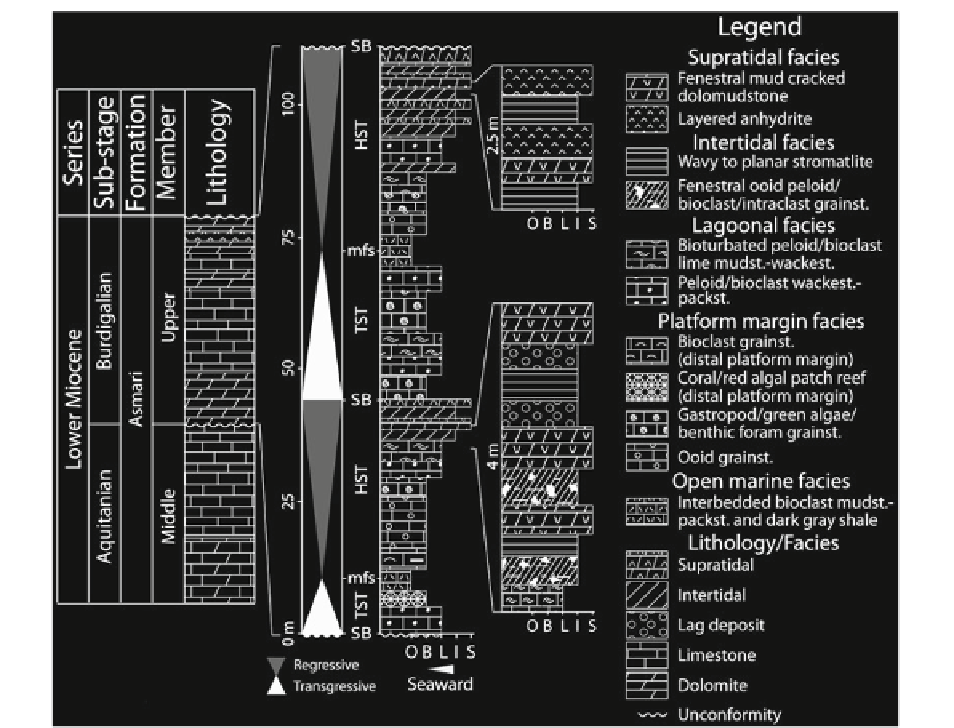Geology Reference
In-Depth Information
Fig. 21.32
Facies column and sequence stratigraphy of the
Lower Miocene upper member of the Asmari Formation in
southwest Iran (localities 6 and 7 in Fig.
21.25
). The upper
Asmari facies are arranged into numerous meter-scale shal-
lowing-upward cycles superimposed on two depositional
sequences consisting of transgressive and highstand systems
tracts. Two typical small-scale shallowing-upward cycles are
shown to the right of the facies column. Note that tidal fl at
deposits occur in the upper part of the highstand packages.
Black and gray triangles represent transgression and regres-
sion, respectively. Abbreviations:
HST
highstand systems
tract,
mfs
maximum fl ooding surface,
SB
sequence boundary,
TST
transgressive systems tract. Letters at the base of col-
umns denote facies including: supratidal (
S
), intertidal (
I
),
subtidal lagoon (
L
), ramp margin barrier/shoal (
B
), and open
marine (
O
)
cracked dolomudstone containing fenestral fabric and/
or crystals/nodules or molds of gypsum/anhydrite
(supratidal facies); (2) dolomitized wavy and fl at-
laminated stromatolite boundstone with desiccation
cracks, birdseyes, small tepee structures and gypsum
and/ or anhydrite crystals or pseudomorphs interca-
lated with erosive-based intraclast grainstone-pack-
stone laminae (upper intertidal facies); (3) dolomitized
fenestral ooid peloid/bioclast intraclast or fenestral
bioclast grainstone with skeletal fragments of a
restricted fauna (mainly miliolids) (beach ridge/lower
intertidal facies); and (4) bioturbated peloid/bioclast
lime mudstone to wackestone or packstone; bioclasts
include ostracods, benthic foraminifera (mainly den-
tritinids and miliolids), gastropods and green algae
(lagoonal facies) (Fig.
21.5c
). These facies are arranged
into meter-scale shallowing-upward cycles and display
retrogradational and progradatiol stacking pattern in
the transgressive and highstand systems tracts, respec-
tively (Fig.
21.32
). Tidal fl at deposits are as much as
20 m thick and occur in the upper part of the highstand
packages. Carbonate tidal sediments of the Asmari
Formation were deposited in the ancestral Persian Gulf
Foreland Basin in environments that are quite similar

